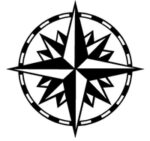Ants
Carpenter Ants: They are one of the most common insects that we are called upon to control. They typically show up in areas where there is food and water (kitchen and baths) are found.. They can do significant damage when not controlled. Carpenter ants do not eat wood they live in the wood and excavate the wood and turn it into frass (sawdust). They are most active from early spring to end of summer. One of the most sought after food for Carpenter Ants is honeydew which is the secretion from aphids and leafhoppers on your plants at the exterior of house.
Some other common Ants we treat for are:
Pavement Ants commonly call sugar ants. These are the ants that kick sand up along driveways and walkways.
Odorous House Ants: Small ant that typically number in the hundreds if not thousand. They can appear in any area in the house. If you crush them they smell like coconut.
Acrobat Ants: These Ants are about the same size as Odorous House ants. The abdomen (rear section) is shaped as a heart.
Treatments: Atlantis Pest treats the interior of your house with a bait product that mimics the honey dew .This product is applied in a gel form. The product is applied into areas of activity which allows the ants a food source before they continue to infest the property. The ants take the gel back to the nest and feed the larvae which then transfer it through the nest. The exterior treatment is a liquid application along the foundation, ,decks, door frames, and other conducive areas and potential entry points.. When treatment is completed you must keep windows and doors closed until exterior treatment has completely dried. About 1 hour. `The treatment takes about three to four weeks to be completely effective. When we do this treatment you will not have to leave your house.
- When treatment is completed the technician will point out conditions that are helping promote activity.
- Trees overhanging house
- Rotted wood
- Rotted landscape ties
- Ants nesting in trees in yard
- Excessive moisture
- Downspouts not extended away from foundation
- Mulch in contact with wood
